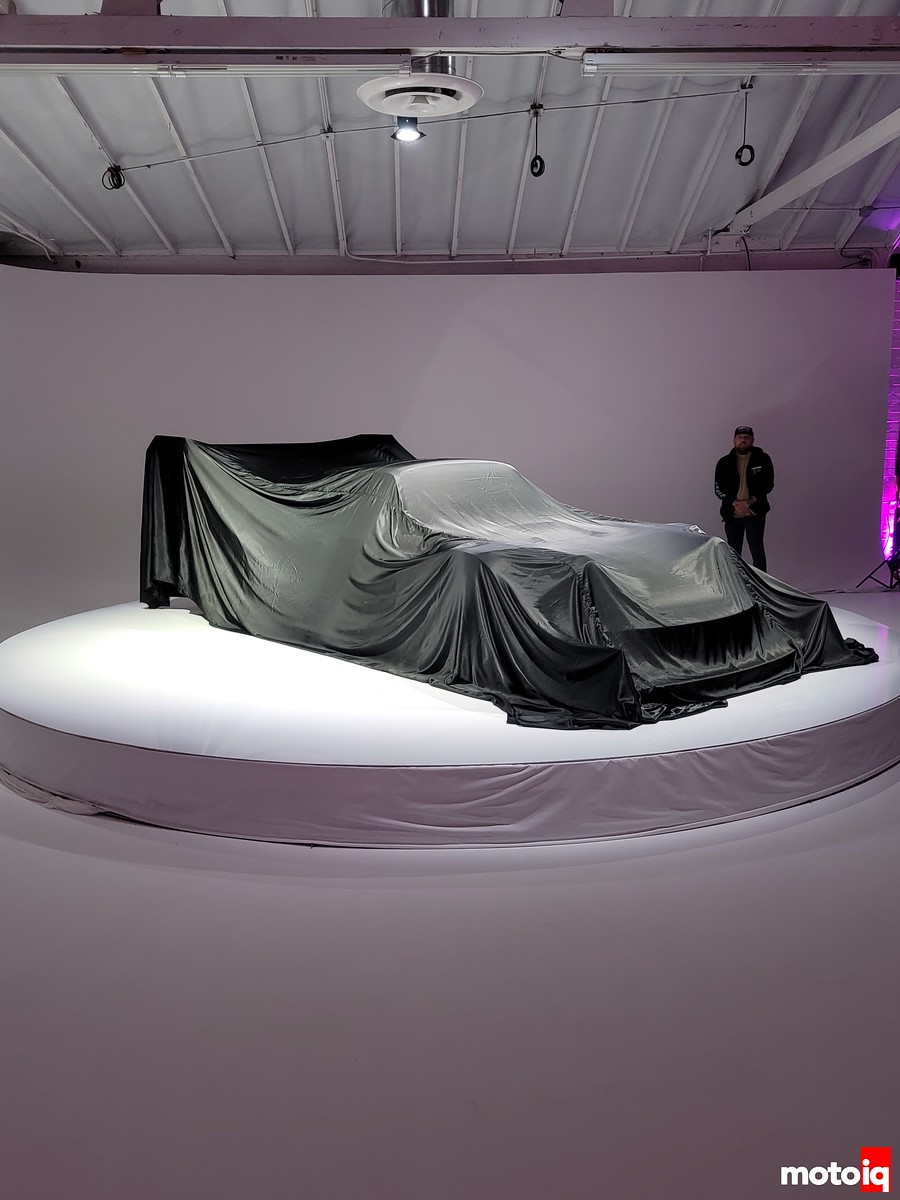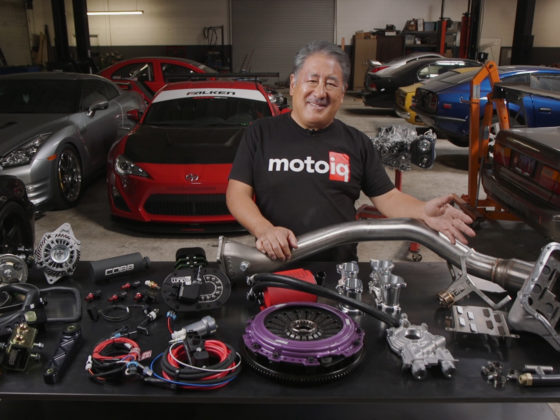
Since the ride height of the car is higher than what it would be in a road racing car, for instance, you can see a lot of details that are used to develop strong side vorticities along the lower sides of the car. You are probably noticing how high the splitter endplate has to be off the ground. However, the entire endplate is a devoted vortex generator. Look at this amazing feature built into the side plate, it has stepped, scalloped, and angled elements to maximize diffusion to create a negative pressure differential while also generating a powerful vortex. The vortex generation starts with this little tab thing and it is amplified by the scalloped endplate. Man how many hours of CPU time figured out the subtle curves of these shapes. The cost of the molds to make these parts is staggering.

A lot of splitters have stagnation traps in front of the wheels to create a downward pressure differential but look at this, a multi-element front diffuser-winglet, The separate elements take advantage of each element turning the flow to keep separation at a minimum, and each element gains angle of attack till you have a pretty large angle of attack yet no flow separation to efficiently create maximum downforce in a small package. The high diffusion level also reduces the CFD hotspot you typically see at the front of the tires that cause lift, drag, and positive pressure pumping in the wheel wells. You can see this sort of multi-element feature on F1 car’s front wings. Look at the 3D curves of the endplate which helps accelerate the airflow over the top of the winglets to drive more pressure differential. The end plate cross-section is also very complex. Mind blown.

What’s this? Look at this detail on the front “bumper” it serves as a turning vane to direct more airflow over the front winglet. Somehow it still manages to look like a Porsche 911 bumper.




15 comments
Whoa! Wow! That is as eloquent as I can be at the moment.
Really looking forward to seeing the full reveal and write up about this car. Take LMP1 levels of aero design, combine with a hint of 911, and wow! I can’t wait to see the suspension setup, with no constraints of a modified factory chassis. That will have allowed them to really design it exceptionally well from scratch. Again… wow!
BBI did a brilliant job with a turbo charged Porsche Cup car for Jeff Zwart a few years ago, and again with a newer modified Cup car that you reviewed two years back. It is great to see them continuing to take their work to ever higher levels.
It is not a factory chassis but a bespoke tube frame I think with a stressed carbon floor.
Sorry, I wasn’t clear! I meant I was looking forward to seeing how they did without constraints- being tube frame, they aren’t stuck within the parameters of a modified factory chassis (which many projects are). Complete freedom from design to one off construction 🙂
I thought so!
Well, that’s the proper way to build a 911! Look forwards to seeing under the skin.
Just wait! It is amazing.
I recently saw a video with some peeks under the skin of the old Pikes Peak Tacoma which was awesome but definitely of its time… so curious for comparison. But in general… I mean, my favorite 911s are the GT1 and the 935 (and the details around the tail on this are 100% 935 to me) so you can imagine why this is to my taste.
For a niggly technical thought, I wonder how much 3d printed composite molds have overtaken the older method of CNCing from tooling resin.
“Overall the car’s bodywork is supposed to generate 5000 lbs of downforce at 120 mph. ”
What’s the source on those downforce numbers, since they are rather . . . remarkable. Enviate (2017) was apparently pushing 6600lbs @ 100 mph. So apparently the Pigasus is making 16% less downforce at 16% more speed than Enviate. The Eagle MkIII GP with the twin tier wing is making 5217 lbs @ 150 mph. Yes Enviate and the Eagle MkIII have a lot less complexity, but aero complexity can’t make the difference in terms of sheer surface area, along with the intrinsic advantage prototypes have aerodynamically.
The source is from CFD testing using OpenFOAM. The numbers are a little optimistic based on the data if you average the ride height window the car will actually see. I will go out on a limb and say I doubt the Enviate is making 6,600lbs at 100mph. I could be wrong, but I do not think so based on data I have seen from our testing and testing at the top level of motorsports.
The hoonipig’s aerodynamics were designed specifically for a higher than normal ride height and a soft (in aero terms) mechanically set up the car. The whole underside of the car was designed to have a consistent downforce and balance throughout the range of motion for more useable downforce instead of peak numbers. This is specifically why certain details of the car are the way they are. Peak downforce wasn’t an important factor in the design or testing minus making sure there wasn’t a large peak. Downforce and balance is really a 3d surface map based on ride height front & rear, roll, pitch, heave, and speed. The goal is to make sure that map is as even as possible. In math terms, the goal is to have the largest and most even volume under the surface as possible.
I understand what you are trying to do with the aero map to ensure consistency over the run at Pikes Peak, since even compared with other hillclimbs Pikes Peak has awful road conditions. You say “the car was designed to have a consistent downforce and balance throughout the range of motion for more useable downforce instead of peak numbers.”, yet for a silhouette car, that’s sounds like a very high peak number for the speed. I would presume that’s approaching WTAC Pro class levels of downforce with what looks like a substantially less aggressive setup. I presume the 5000 lbs is the absolute peak in ideal conditions, but how far is that peak from the realistic running conditions? It’s just hard to wrap my head around the idea that with a more powerful floor design and aggressive front end, one can generate more than double what Feras’ C5 is able to create.
Also 2 quicker questions. How important are those turning vane behind the front wheels in creating overall downforce? And is their any good and free resources to learn OpenFOAM? I’m going to be helping my friend with running his NB MX5 in time attack.
Underbody downforce is so huge… I think looking at this car as a silhouette car is a bit misleading; obviously in this article we can’t see the full extent of what’s going on with the underbody, but I would expect that it’s less compromised than even open class WTAC.
I would expect the lift to drag isn’t spectacular however, given what it’s for.
That would be peak. How close it is to how it will be running will be hard to say until testing. I would say on the mountain, it will certainly be making less. This is two fold, elevation and conditions. Actual numbers will be hard to tell though until testing. The floor does make more downforce than the wing, even at high ride height. It is a pretty complex design.
Feras’s cars numbers aren’t peak numbers. I don’t quote peak. His car is also designed a little different. It is running a totally different splitter arrangement also and just a flat floor. Different designs with different goals and different budgets.
The turning vane behind the front tires are very complex. These are more of what I’d call a flow control device over downforce device. They do help produce downforce, upstream and downstream. Closer to Pikes Peak or after, we can do a write up on what is really going on aerodynamically around the car and get into them in detail.
There are a ton of resources for learning openfoam, certainly compared to when I learned. YouTube has a lot of great resources. Besides YouTube, I’d look at wolf dynamics pdf’s
Great write up! We worked hard to develop the body and aero while still keeping a specific look required. The whole team involved worked very hard to get the car done in record time. It’s pretty neat to see all the positive responses to the car, especially when you played a large roll in the development
I honestly love the front end; it looks so much like a 934 at first glance, but the cheeky way the lines are doing massively different things on this car are awesome.
Thanks! Oilstain did concept renderings of ideas on what it could look like. We made it racecar. They rendered again, tweaking the looks, and then we finessed it to make it work aerodynamically and manufacturable. It was certainly a lot of work and glad people like it.